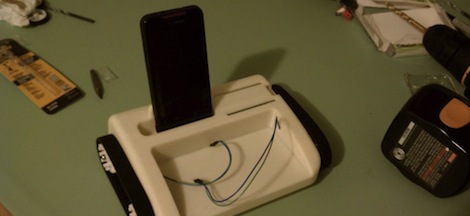
[Tuomas Nylund] wanted a way to visualize the electromagnetic fields (EMF) around him. He figured the oscilloscope was the tool best suited for the task, but he needed a way to pick up the fields and feed them into one of the scope’s probes. He ended up building this EFM probe dongle to accomplish the task.
He admits that this isn’t much more than just an inductor connected to the probe and should not be used for serious measurements. But we think he’s selling himself short. It may not be what he considers precision, but the amplification circuit and filtering components he rolled into the device appear to provide very reliable input signals. We also appreciate the use of a BNC connector for easy interface. Check out the demo video after the break to see the EMF coming off of a soldering station controller, from a scanning LCD screen, and that of a switch-mode power supply.




















